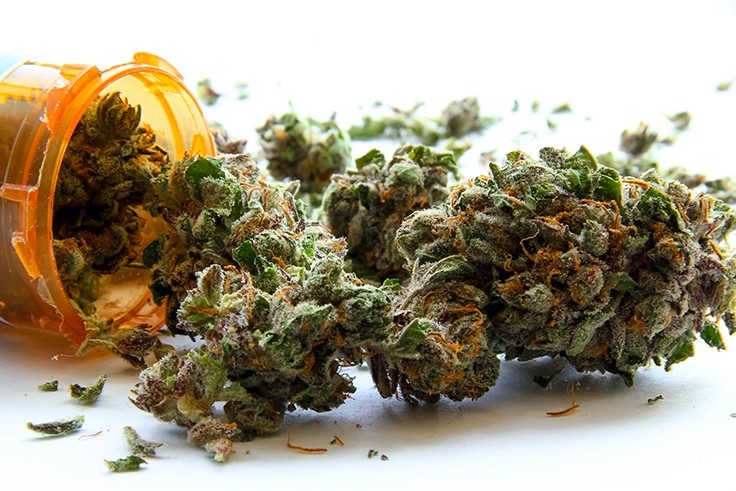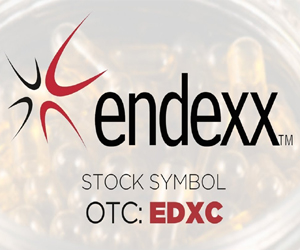Louisiana’s Medical Marijuana Inhalation Bill Wins Passage
Marijuana Industry News June 6, 2019 MJ Shareholders

As a third-generation grower of ornamental plants, Jake Van Wingerden, president of SunMed Growers in Cecil County, Maryland, launched a cannabis cultivation business with a solid foundation and background in horticulture.
Though there are some parallels that Van Wingerden applied to cannabis from his experience with growing bedding plants, he has learned that there are many aspects that set cannabis apart from others – namely, its appetite for light.
“Cannabis is the most aggressive plant I’ve ever grown in my life,” Van Wingerden says. “There’s a reason they call it a weed. It wants as much light as you can give it. It wants a very high feed rate. It wants a lot of water, and at certain stages of its growth cycle, it grows an inch a day.”
Van Wingerden carefully customized a state-of-the-art, 78,000-square-foot complex, comprised of a 60,000 sq. ft. greenhouse and 18,000 sq. ft. of support structures. The greenhouse is a perpetual harvest facility where plants cycle through zones that provide plants what they need during each growth stage so that the company can harvest 400 to 500 plants a week. Cannabis plants transition through cycles on movable tables over a four-month period so that they don’t need to be moved, with the light, irrigation and feeding system changing depending on the stage the plant is in.
Growing year-round in a greenhouse means the company relies on the sun to provide much of the light the plants need to develop to their full yield and potency potential. Van Wingerden also initially installed supplemental high-pressure sodium (HPS) lights to maintain an adequate daily light integral – or DLI – to compensate for cloudy, rainy and dark days.
“The difference with cannabis and bedding plants is you are not growing … a pack of petunias or a hanging basket of calibrachoa that just needs to be pretty. I’m growing a product that I get paid for by the gram, and I also get paid based on the potency,” Van Wingerden says. “There is a direct correlation [between] the [yield in] grams per square foot and potency of that yield based on the amount of accumulated light that the plant gets in its growing cycle.”
But Van Wingerden knew from the first month they started growing – in November 2017 – that the system wasn’t producing enough light for the plants, even with the supplemental fixtures. They weren’t getting the potency and yield they anticipated.
“Our first growing cycle was through the winter, and it was a dark winter, and we recognized right way that we did not put enough light in here,” he said. “We realized very quickly that on cloudy days or winter days, the supplemental lights were not [enough.] The plant itself can absorb a tremendous amount of light. It’s a full-light plant, and it grew up in the high-light areas of the world, that’s where it comes from.”
Van Wingerden wanted to double his lighting but at the same time wanted to save on electricity, as bills were growing from the energy required to power HPS lights and a dehumidification system, and energy load capacity was nearing.
After raising money from investors and consulting with Fluence Bioengineering on their LED offerings, Van Wingerden installed supplemental LED lights from Fluence about two months ago and is already pleased with the results.
“We don’t have a lot of data to share, but we’re very excited about what we are seeing so far,” he says. “The amount of DLI and the light that the plant receives each and every day is critical to its growth cycle and directly related to yield and potency.”
So far, they are already noticing better flower growth and development. And despite the initial up-front investment, Van Wingerden knows he’ll save money down the road.
“The cost of the lights themselves and the electricity to grow them is well worth the return on investment based upon the yields that we should start experiencing and the yields we anticipate,” Van Wingerden says, adding that the LEDs use about a third of the energy of other lights. “I’m growing a bud. I want as many buds as possible that weigh as much as possible and that have the most potency associated with them.”
SunMed Growers will break ground on a new facility this summer, expanding their footprint by another 100,000 sq. ft. They have asked Fluence to price out a HPS/LED lighting combination like they use now, but they are also considering investing in an all-LED greenhouse. He’s learned from his first year-and-half in business and has advice for other growers who are interested in cultivating cannabis in a greenhouse.
“One of the critical factors is light,” Van Wingerden says. “If you’re going to grow in a greenhouse, make sure your budget is robust enough to put enough light in there for the darkest day that you will experience in your year. You need to have enough light in there to compensate for those dark times. Otherwise, your potency and your yields will suffer, and that’s how you get paid.”
MJ Shareholders
MJShareholders.com is the largest dedicated financial network and leading corporate communications firm serving the legal cannabis industry. Our network aims to connect public marijuana companies with these focused cannabis audiences across the US and Canada that are critical for growth: Short and long term cannabis investors Active funding sources Mainstream media Business leaders Cannabis consumers








